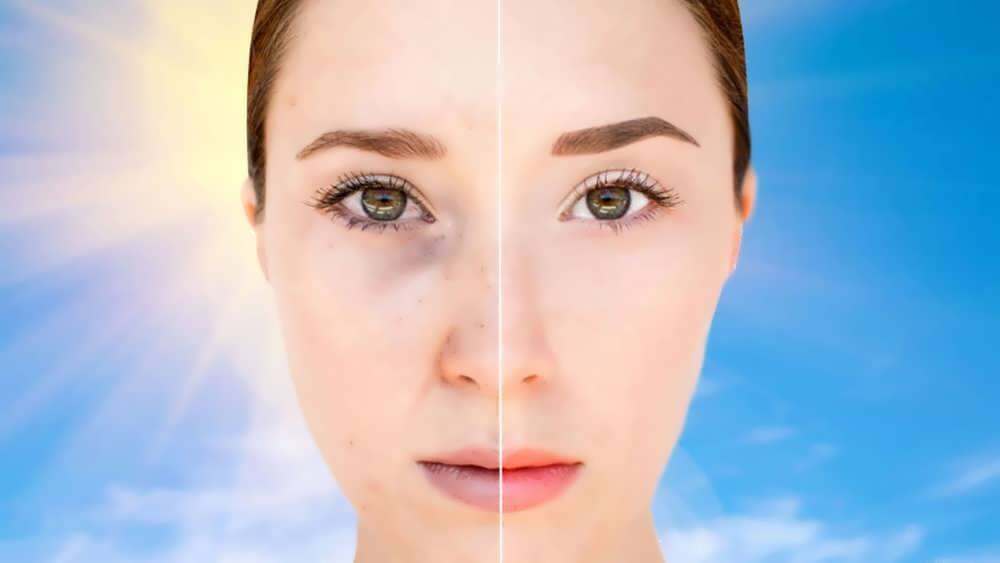Sunburn is skin conditions that have been directly exposed to the sun. Sunlight and ultraviolet rays cause damage to skin cells and can cause a variety of skin problems, some of which are very serious.
If you have been exposed to the sun but your skin is not burned, it is still possible that your skin is damaged despite the healthy appearance, the redness of your skin can really be a sign of sun damage. The good news however is that the sun damage is reversible through a variety of methods.
What causes sunburn?
The main cause of sunburn is the Exposure of skin to the sun without any protection for a long time. We need to be exposed to sunlight to get vitamin D, but what we need to keep in mind is that too much sunlight absorbs the sun’s ultraviolet rays, which can damage the skin’s cellular DNA and can Causes pigmentation, wrinkles, dryness, sunburn, skin texture and even skin cancer.

What are the types of skin pigmentation?
One of the major results of Being exposed to the sun is skin pigmentation which mainly occurs in three types:
Epidermal:
The epidermal or superficial pigment is close to the color of the skin surface. Exposure to sunlight causes skin freckles.
Dermal:
Dermal or deep pigments are commonly found on deep surfaces of the skin. Congenital moles are of this type of pigment.
Hybrid pigment:
These pigments are a combination of epidermal and dermal and are visible in the superficial and deep layer of the skin. Melasma is one of these types of pigments.
What causes skin pigments to intensify?
Excess skin pigmentation or hyperpigmentation is usually caused by a large amount of skin melanin. Increasing the number of melanin leads to excessive production and accumulation of melanin in the skin and the formation of brown or dark spots on the skin.

Which sun-damage treatments are more effective?
Aside from many treatments available nowadays in order to reverse the skin damages caused by the sun such as moisturizing creams and herbal oil, is laser therapy.
A laser is a device that performs its function by producing a coherent beam of light. Lasers with different wavelengths target different tissues or molecules. In addition to treating or healing the skin, it is also used in surgery. There are different types of laser devices with different applications. The most widely used and common laser for removing skin pigmentation is the method called Cynosure’s innovative laser treatments. Melanin is the main pigment that creates skin color. The laser targets skin melanin with intense light. After absorption, the beam produces heat to kill melanin cells or skin cells that contain pigment. In this method the sun damage could actually be reversed dramatically.
Tips after Cynosure’s treatment sessions:
After treatment, be sure to use moisturizing creams regularly. The cause of itchy skin in some clients after the treatment session is dry skin, which will be completely eliminated by using moisturizer.
The treated area may become red or swollen, which is the natural effect of the laser and will resolve quickly with anti-inflammatory creams such as zinc oxide or the like.
It is recommended to avoid washing the treated area with detergent for 12 to 24 hours after the treatment session.
After the laser sessions, you should have enough protection of your skin against the sun and be sure to use sunscreen, otherwise, you will make your skin an option to create superficial spots.


